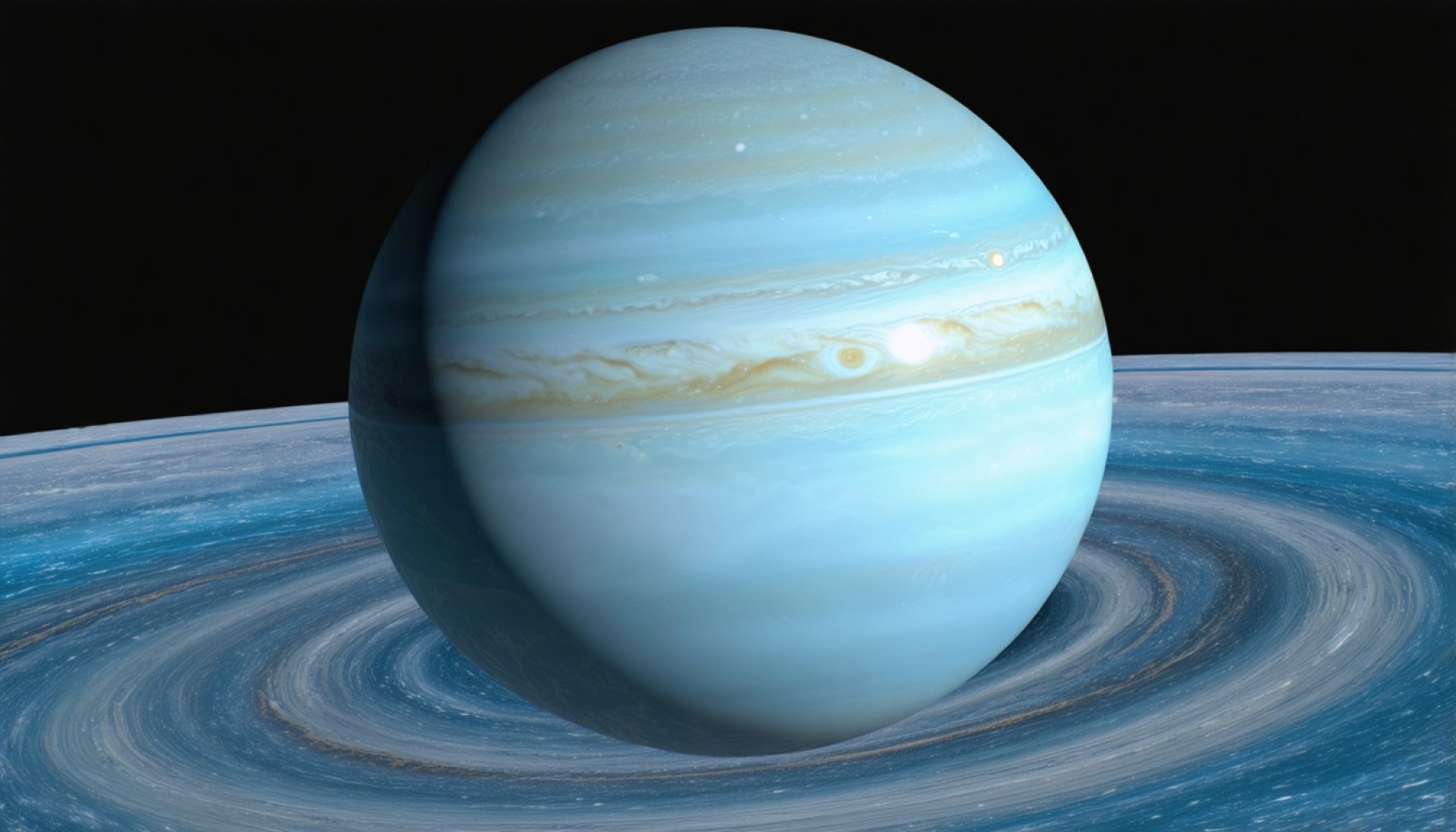- Uranus’s rotation period has been precisely measured at 17.247864 hours, refining earlier estimates by Voyager 2.
- The Hubble Space Telescope played a crucial role in this discovery by analyzing ultraviolet aurorae images from 2011 to 2022.
- Astronomers mapped Uranus’s complex magnetic field to determine its rotation with unprecedented clarity.
- This breakthrough enhances our understanding of Uranus’s magnetic systems and enables accurate future exploration.
- The findings open new possibilities for studying Uranus’s unique atmosphere, composition, and magnetosphere.
- Uranus presents new opportunities for exploration, as scientists aim to unravel its icy secrets and other mysteries.
On the ethereal frontier of the Solar System, where sunlight fades into a perennial twilight, Uranus pirouettes through space with a subtlety long cloaked in mystery. Once thought to spin at a brisk 17.24-hour pace as suggested by Voyager 2’s fleeting flyby in the winter of 1986, a new revelation has emerged, graced with the precision of contemporary scientific endeavor: Uranus’s rotation period is precisely 17.247864 hours—a significant refinement uncovered through the vigilant eyes of the Hubble Space Telescope.
This groundbreaking discovery unfolds like a space-aged detective story, stitched together over a tapestry spanning decades. Utilizing an extensive archive of ultraviolet aurorae images captured from 2011 to 2022, astronomers successfully mapped the elusive tango of Uranus’s magnetic poles. The celestial dance, accentuated by the planet’s tilted and offset magnetic field, renders its aurorae akin to cosmic fireworks—erratic and spectacularly unpredictable.
By charting these auroral displays, researchers led by Dr. Laurent Lamy have finally dispelled the fog of uncertainty that has plagued Uranian coordinate systems for eras. With the new rotational insights unearthed, prior coordinates which once grew obsolete with alarming haste can now be revised and reignited with scientific rigor, ushering in an era of accurate magnetic tracking.
The cornerstone of this revelation lies with Hubble’s unyielding gaze—a testament to NASA’s groundbreaking observatory that heralds a new age of planetary understanding. Over twelve diligent years, Hubble absorbed the ultraviolet signatures radiated from Uranus’s poles, forming an unbroken timeline, stringing together the whims of a world far removed from our own. Hubble’s ocular tenacity allowed its team to pinpoint the planet’s rotation period with unprecedented clarity.
With these findings, a fresh chapter in solar exploration unfolds. As astronomers adjust their celestial compasses to this newly furnished data, the enigmatic whims of Uranus promise to provide fertile ground for future missions, offering tantalizing prospects for unraveling the secrets of its atmosphere, composition, and magnetosphere, so distinct from anything found closer to home.
In a whisper from the cosmos, Uranus has spoken—a prelude to the adventures that await in its icy, azure depths, as humanity’s quest to understand the universe continues, driven by the same curiosity that nudges us to look up and wonder.
Uranus Unveiled: Discovering the Secrets of Our Solar System’s Mysterious Giant
Understanding Uranus: More Than Just Rotation
The fascinating new revelation about Uranus’s exact rotation period unfolds as a vivid narrative of scientific achievement and curiosity. While previous estimates placed the rotation period at about 17.24 hours, the Hubble Space Telescope has fine-tuned this measurement to a precise 17.247864 hours. This discovery is pivotal not just for mapping but also for understanding the complex dynamics of Uranus’s magnetic field and atmosphere.
Key Insights Beyond the Basic Find
Real-World Implications:
– Navigational Accuracy: The refined rotation period allows for more precise modeling of Uranus’s weather patterns and magnetic field interactions.
– Future Missions: Enhanced data aids planning for potential missions, ensuring better-designed trajectories and timing for probes and rovers.
Market Forecasts & Industry Trends:
– Space Exploration Technology: As interest in the outer planets intensifies, investment in space technology and instrumentation tailored for cold and distant environments, like Uranus, is expected to rise.
– Planetary Science Jobs: With more refined data, the demand for experts in planetary science and astronomy is likely to increase as new missions are explored.
Pros & Cons Overview:
– Pros: Unveiling Uranus’s secrets might lead to breakthroughs in understanding icy giant formation and weather patterns, potentially unlocking insights into exoplanets with similar traits.
– Cons: The vast distance poses significant technological challenges and cost implications, making missions to Uranus incredibly complex and expensive.
How Hubble Made a Difference
The Hubble Space Telescope’s continuous monitoring over a 12-year span was crucial, demonstrating how sustained scientific observation can yield significant breakthroughs. The telescope’s ability to capture ultraviolet aurorae helped delineate the intricacies of Uranus’s magnetic field, often compared to cosmic fireworks due to its erratic behavior.
Pressing Questions and Actionable Tips
What makes Uranus’s magnetic field unique?
Uranus’s magnetic field is off-center and tilted nearly 59 degrees from its rotational axis, causing its magnetosphere to tumble unpredictably.
How can these new insights aid researchers?
New rotational data allows researchers to update models of Uranus’s planetary environment, improving predictions about its atmospheric conditions and internal structure.
Actionable Tip for Space Enthusiasts:
Enroll in online courses focused on planetary science to stay abreast of these discoveries, and consider participating in astronomy clubs or forums to discuss the latest findings on planets like Uranus.
The Road Ahead
The Hubble Space Telescope has laid the groundwork for a new era of exploration, and as humanity’s quest for knowledge persists, each discovery brings us closer to understanding the mysteries of our cosmic neighborhood. With Uranus now speaking a clearer language of rotation and magnetism, future missions promise to dive deeper into its icy depths, offering an adventurous frontier for exploration.
For further interest in space exploration and technological advancements, visit NASA’s official website: Nasa.
